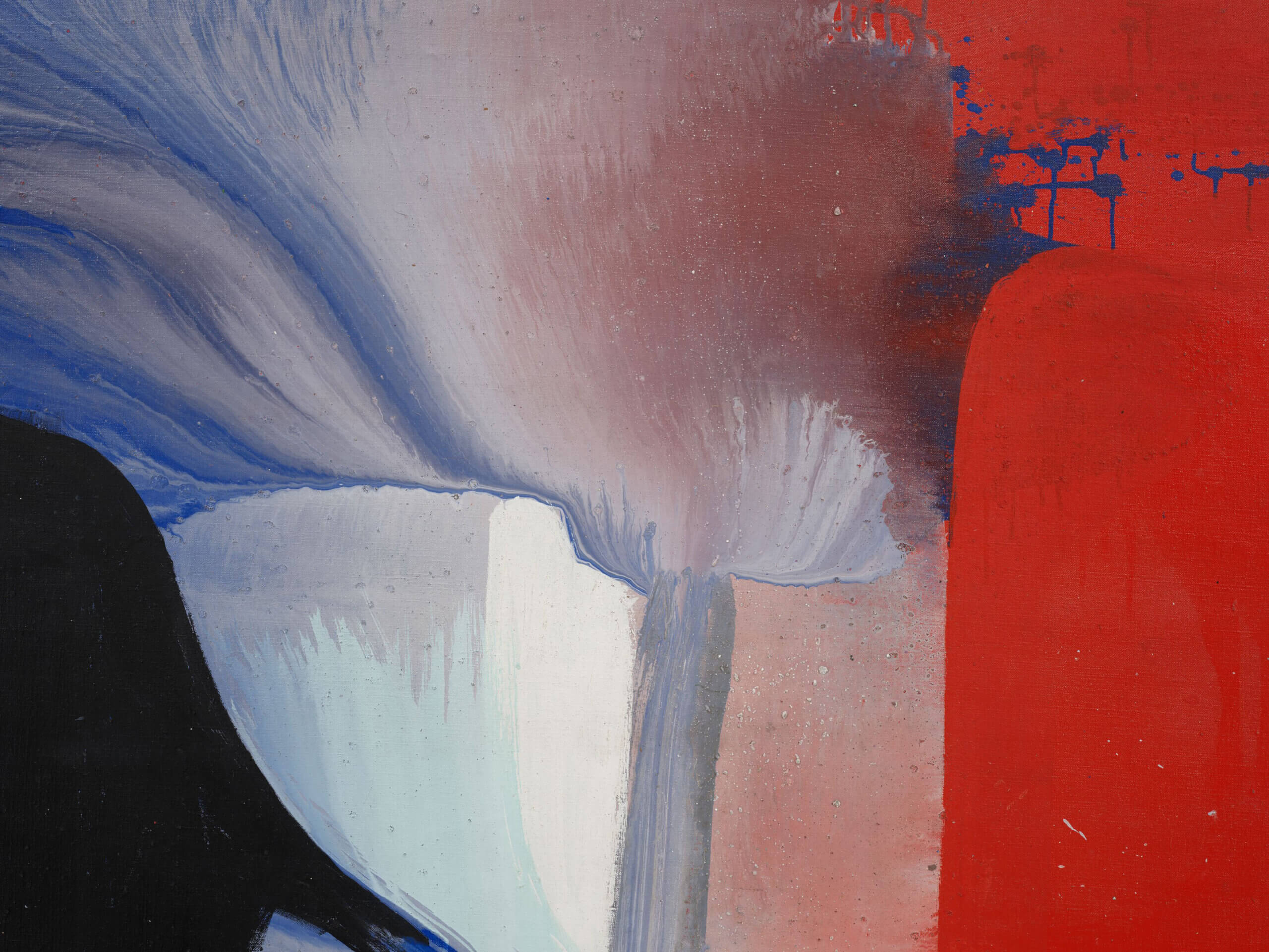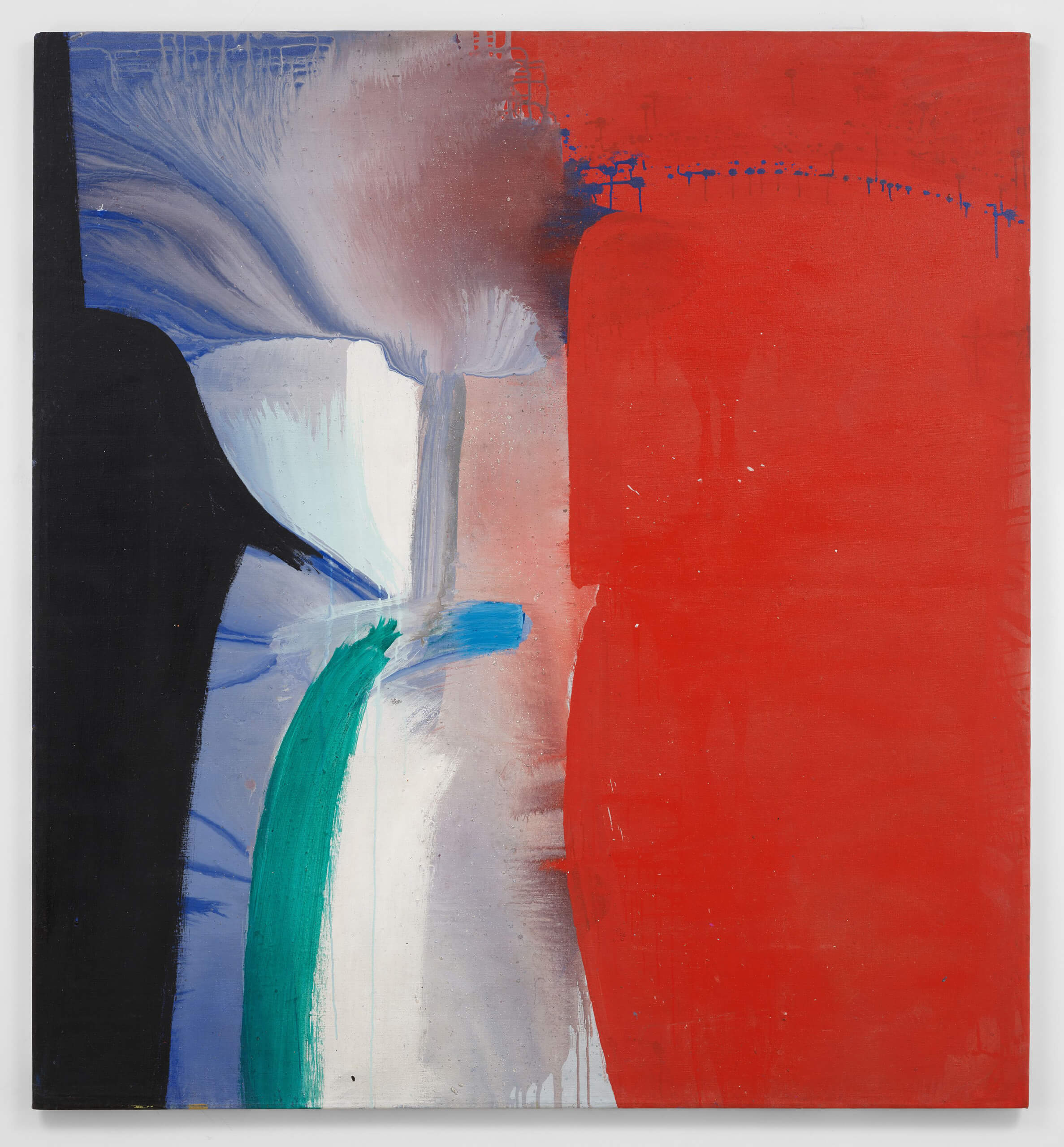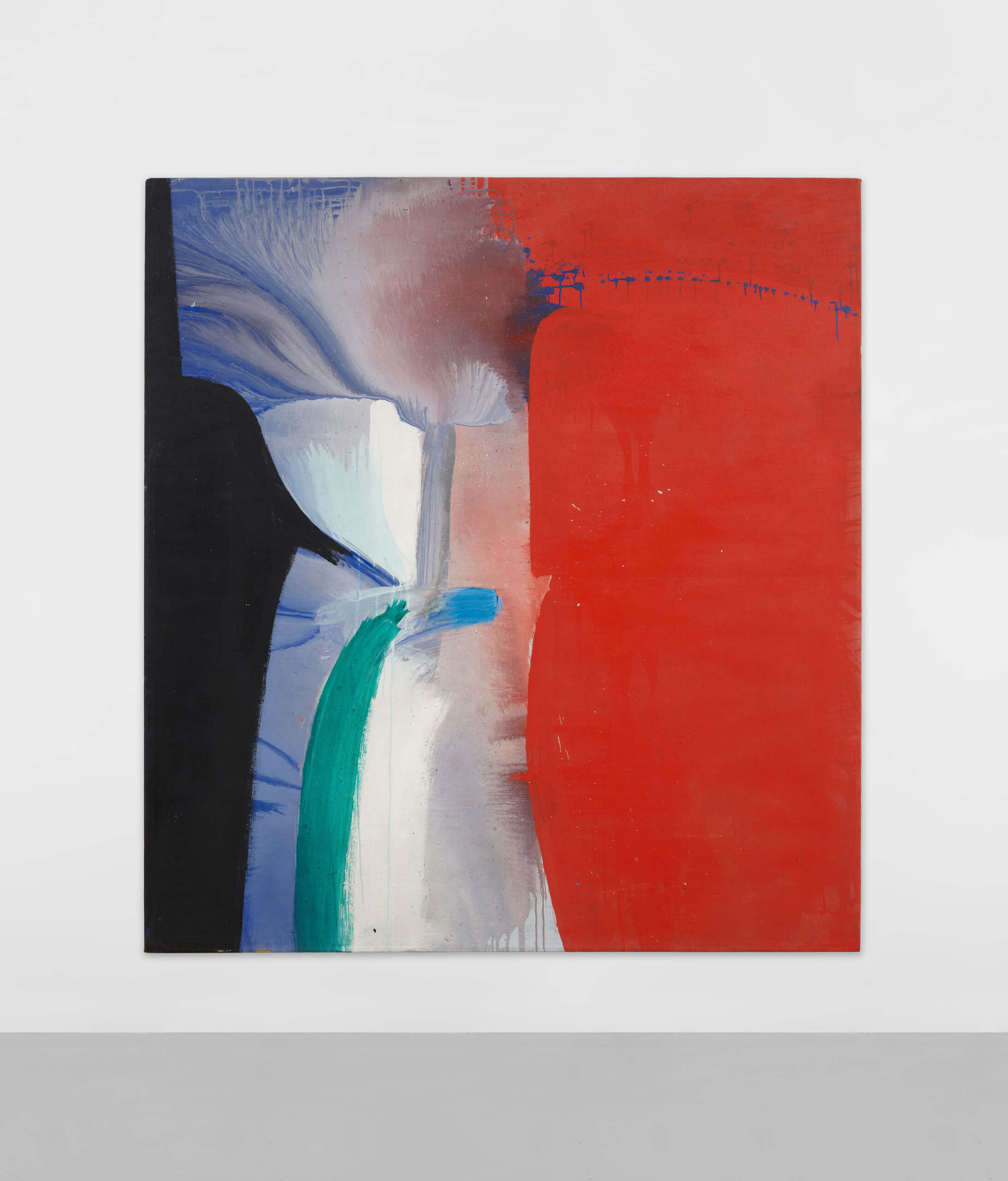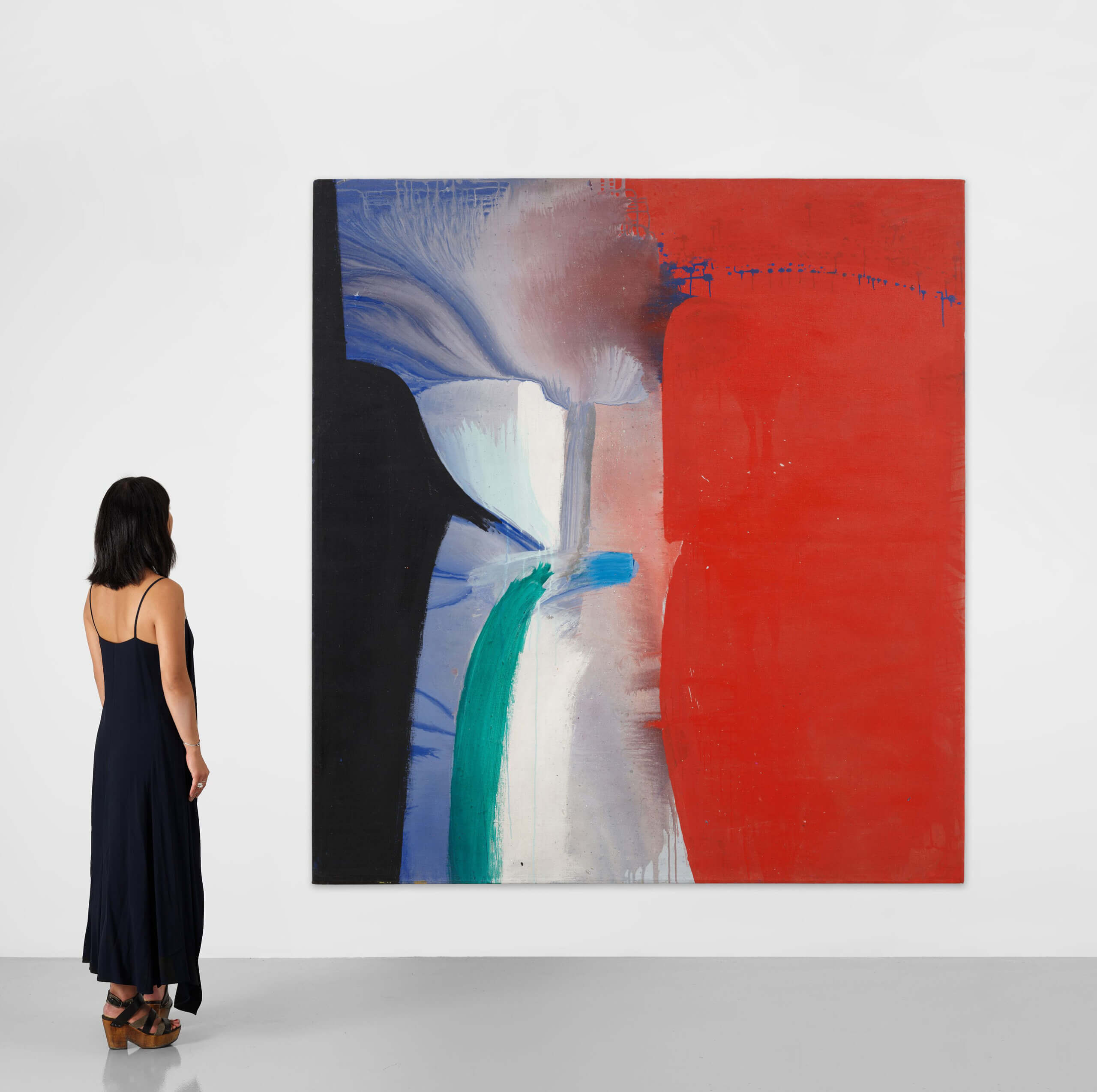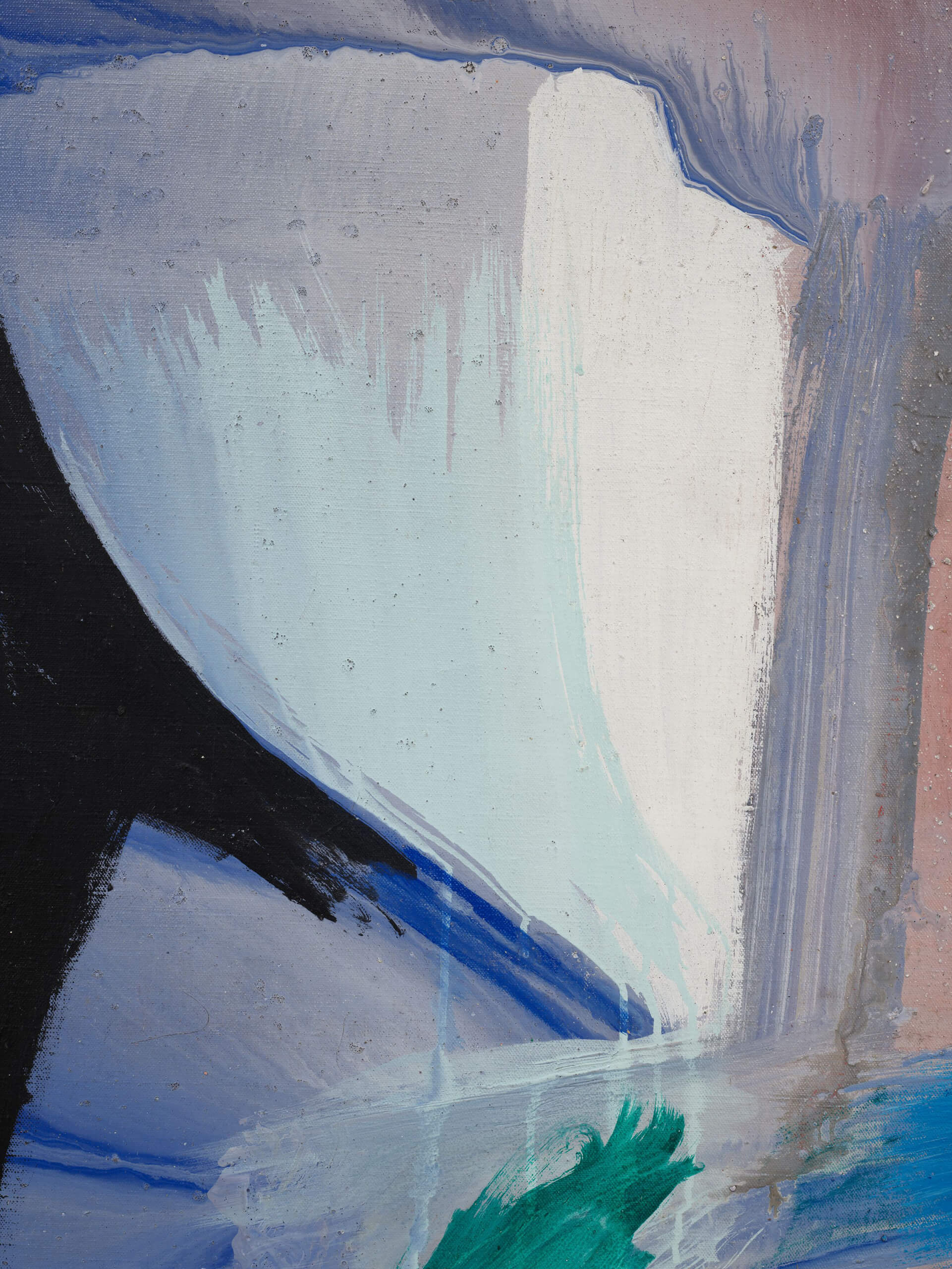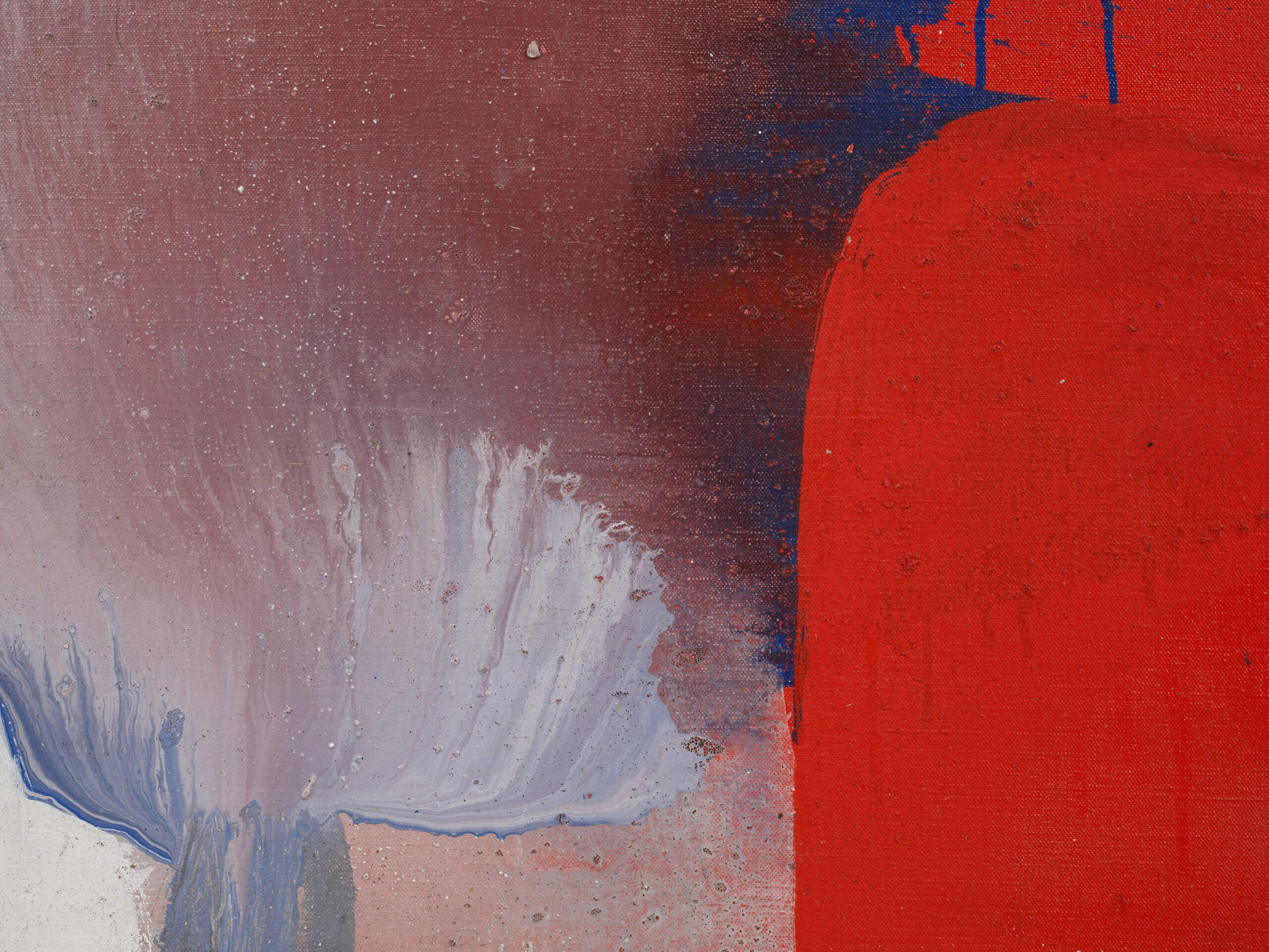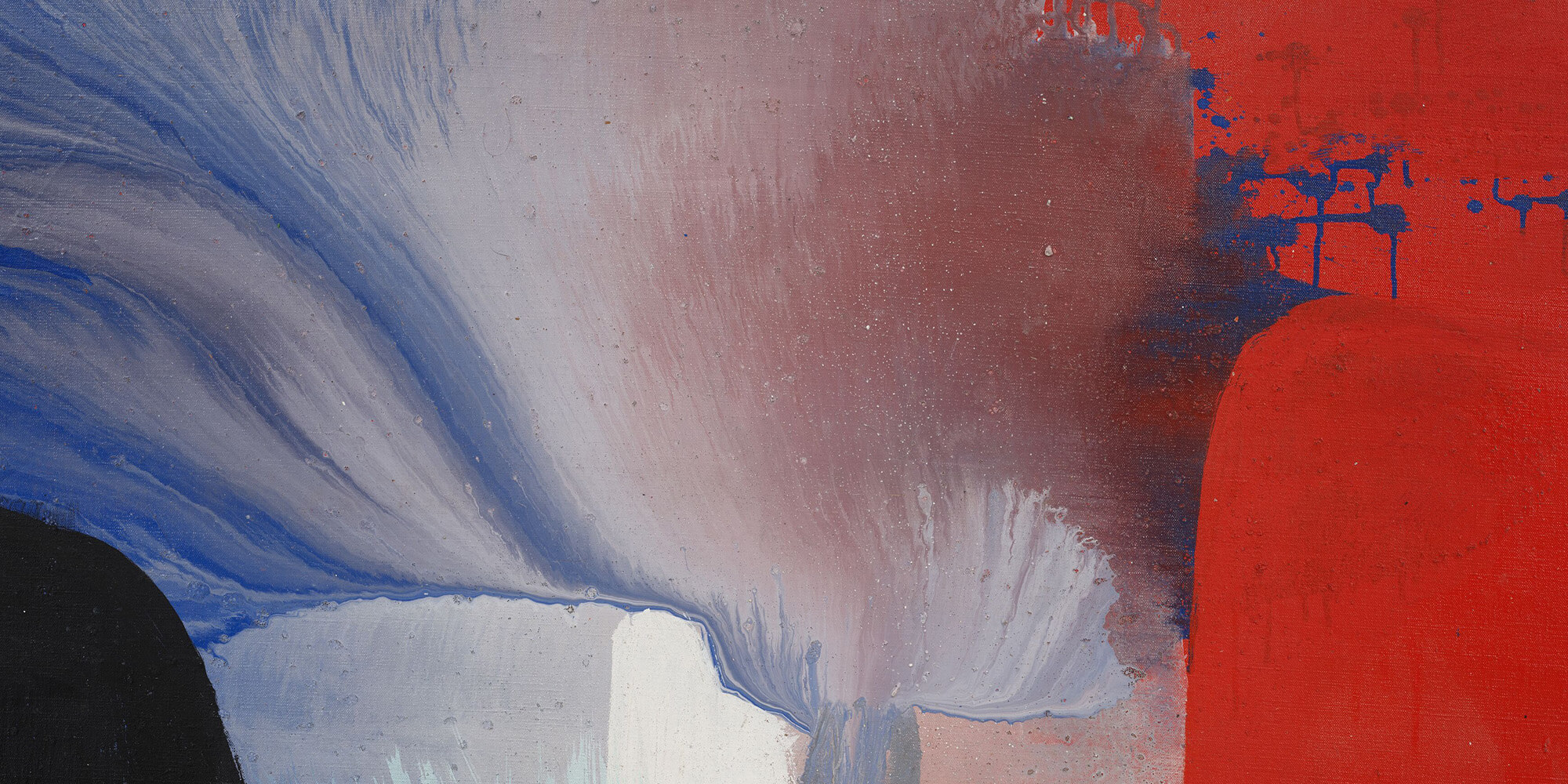
Ed Clark
Untitled
Untitled
1964 Acrylic on canvas 197.2 x 182.9 cm / 77 5/8 x 72 in
Painted in 1964, Ed Clark’s ‘Untitled’ conveys an experimentation with abstract form, color and materiality that, over the course of his decades-long practice, yielded an oeuvre of remarkable originality, expanding the language of Abstract Expressionism.
'I think every artist wants to create something beautiful in the world. I do, but I'll never be satisfied with what I've done.'—Ed Clark
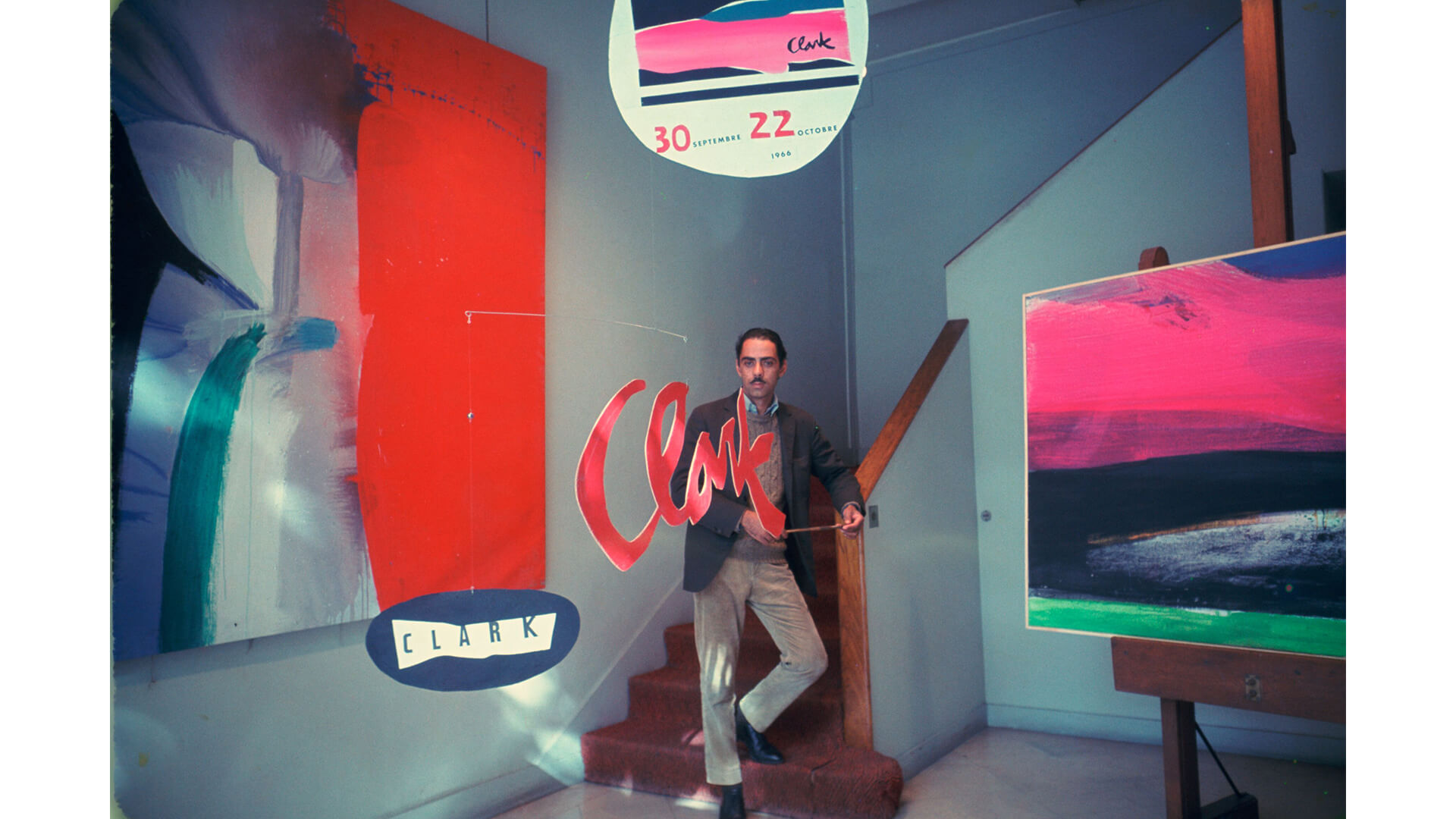
Evoking silhouetted columns, here, the sobering opacity of black and vermillion red fields vertically frame an otherwise tempestuous composition teaming with errant drips and multidirectional cascades of cerulean, periwinkle and ice blue, slate grey, teal and white paint. Defying the distinct categories of gestural and hard-edged abstraction, 'Untitled' exemplifies Clark’s singular practice as he interwove both styles into a unique expression.

'Untitled' with its multi-directional flows of aqueous pigment, clearly anticipates the artist's eschewal of horizontal or vertical preconceptions, visible in works from the mid-1960s that could be hung in multiple orientations. As though splicing together separate moments of making, in 'Untitled', extensions of structured shapes fuse with the spontaneity of material agency, manifesting through Clark in spectacular unity.
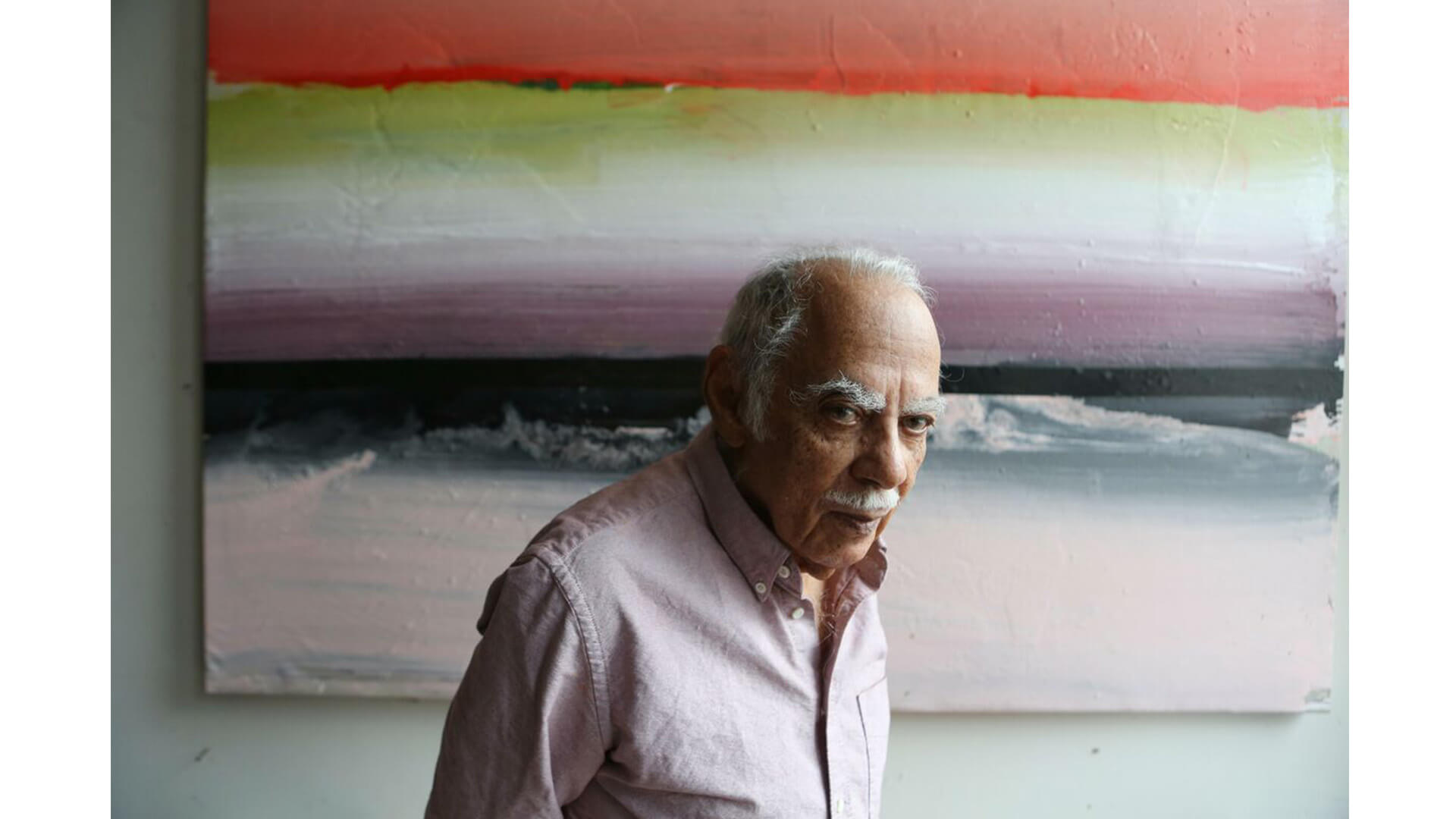
Ed Clark
Ed Clark's experimentations with pure color, abstract form, and the seductive materiality of paint have yielded an oeuvre of remarkable originality, extending the language of American abstraction. His breakthroughs have an important place in the story of modern and contemporary art: in the late 1950s he was the first American artist credited with exhibiting a shaped canvas, an innovation that continues to reverberate today. His search for a means to breach the limitations of the conventional paintbrush led him to use a push broom to apply pigment to canvas laid out on the floor. Defying the discreet categories of gestural and hard-edged abstraction, Clark has masterfully interwoven these approaches into a unique form of expressionism.
